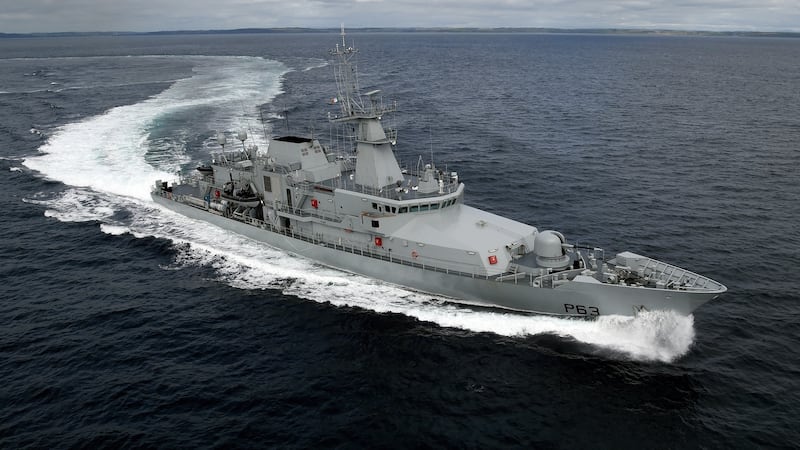A bitter March wind whipped across the Stonebreakers' Yard in Kilmainham Gaol. One side of the courtyard was drenched in sunlight, the other cast in deep shadow, as President Michael D. Higgins emerged from the gaol for the second event of the Easter Sunday commemorations.
The Acting Taoiseach, Tánaiste and Ministers for Defence and Justice stood to attention as the tricolour flapped at half-mast, casting a violent shadow across the high wall where the leaders of the Rising were shot by firing squad in 1916.
Representatives of the main political parties, including Fianna Fáil’s Micheál Martin and Sinn Féin’s Martin McGuinness, along with senior officers of the Defence Forces and descendants of the executed leaders, stood quietly along the opposite wall to pay their respects.
“In this place of final moments, we are reminded of the comfort brought by faith to the leaders of the 1916 Rising,” Defence Forces Chaplain Fr Seamus Madigan, told those present. “We remember, reflect and re-imagine our belief in life after love. We recall the love and devotion of the executed leaders - for family, for country and for God.”
The President stepped forward to lay the wreath, followed by a minute’s silence, which seemed particularly profound in this, the most evocative historical location of the Rising.
Fourteen men died on this spot between May 3rd and May 12th, 1916. The first was Patrick Pearse; the last the wounded James Connolly who was tied to a chair before being shot.
Looking at the firearms presented by the Honour Guard, it wasn’t difficult to imagine a British army firing squad standing there a hundred years ago.
The mournful strains of the Pipers' Lament were followed by the Last Post, with 34-year-old Captain Glen Harmon from Stepaside leading the ceremonial salute, his sword held aloft.
The flag was raised to full mast as the Cadet Honour Guard under Captain Harmon’s command presented arms, polished bayonets glinting in the sunlight.
Then the National Anthem, and suddenly the 15-minute ceremony was over. Within seconds, the skies clouded and a squall of rain lashed down. But by then, the apparatus of State ceremony was moving swiftly and efficiently on to its next appointment at the GPO.
Captain Harmon, who served as a Troop Commander in Chad in 2009/2010 and as Adjutant of the 45th Infantry Group in Lebanon in 2014, agreed that this was a very special day for the Defence Forces.
In particular, he said, it was a “huge honour” for the 92nd Cadet Class who made up the Honour Guard.
The Class commenced training on October 12th last year, and ranges in age from 19 to 28. They are due to be commissioned in January 2017. Cadet Kelly Smith from Co Meath, who was on the Guard of Honour, is the only female member of the class.
For Captain Harmon, Sunday’s events “were a brilliant way for us to put our best foot forward and to show the public what we do.” His pride in the military precision and ceremonial prowess that was being shown was clear.
"I feel very privileged to be here," said Una Ó Callanáin, the granddaughter of Commandant Michael Mallin, who was second-in-command of the Irish Citizen Army during Easter Week 1916, and was executed on May 8th.
She found the ceremony very moving. “I’m trying to visualise 100 years ago, what it was like for those prisoners whose faith was very strong, who probably went to their deaths with the belief that they’d go to heaven.”
Ms Ó Callanáin was in Hong Kong recently for the presentation of the freedom of the city of Dublin to her uncle, Fr Joseph Mallin, who at the age of 102 is the last surviving child of an executed leader of the Rising.
Her own father, Seamus, was Michael’s eldest son. “My grandfather left a large family behind,” she said.
“He was 12 years old when his father was executed. He came to the gaol here to say goodbye the night before he died. It must have been extremely difficult. So actually my father never really spoke about it, because he was too traumatised. Until 1966, when he wrote about it.
“Every time I come here I get quite emotional,” Ms Ó Callanáin said, looking across the emptying Stonebreakers’ Yard. “Especially when you see the soldiers there, and visualising that’s the place where they were shot.”











